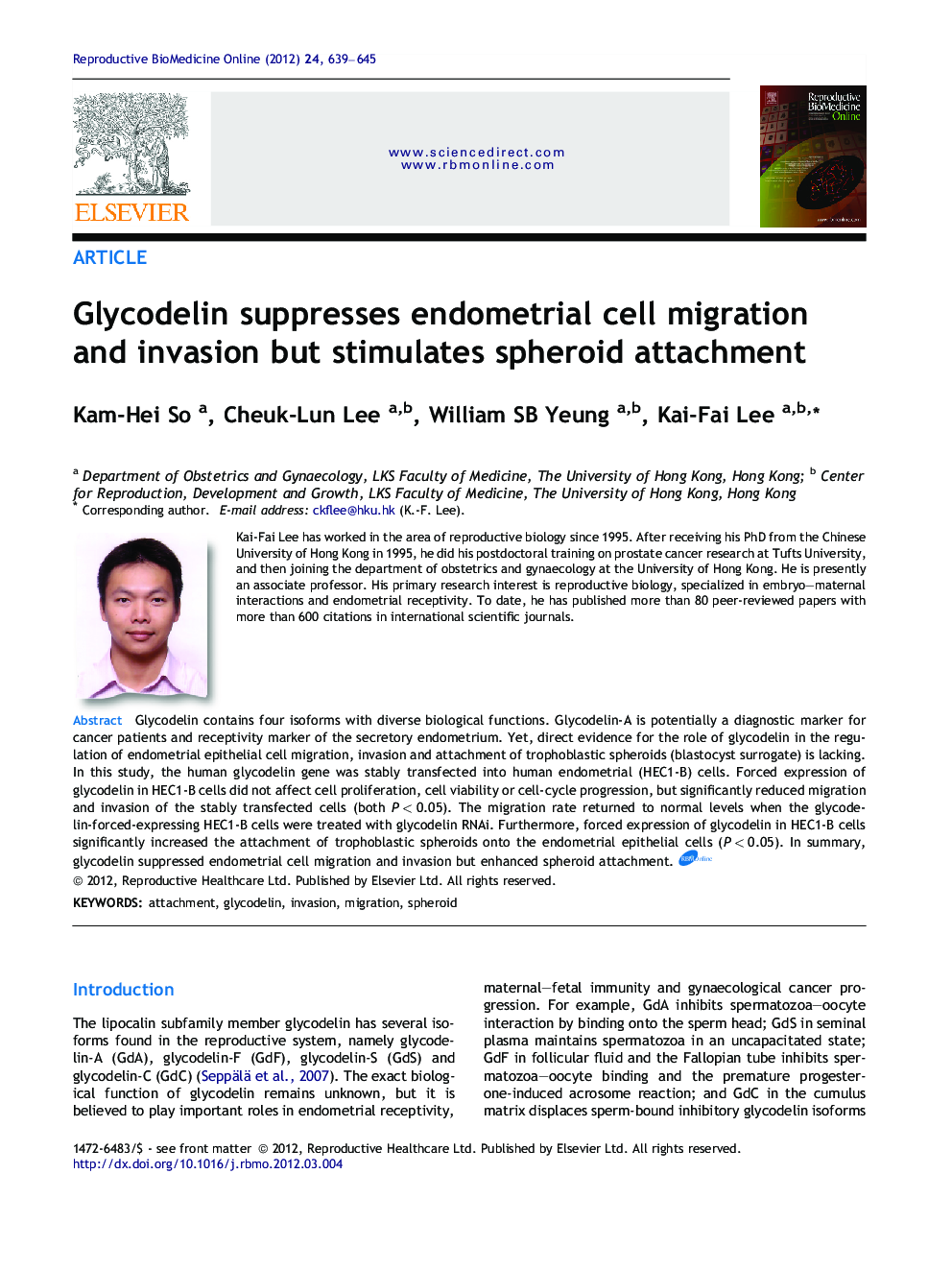| Article ID | Journal | Published Year | Pages | File Type |
|---|---|---|---|---|
| 3970825 | Reproductive BioMedicine Online | 2012 | 7 Pages |
Glycodelin contains four isoforms with diverse biological functions. Glycodelin-A is potentially a diagnostic marker for cancer patients and receptivity marker of the secretory endometrium. Yet, direct evidence for the role of glycodelin in the regulation of endometrial epithelial cell migration, invasion and attachment of trophoblastic spheroids (blastocyst surrogate) is lacking. In this study, the human glycodelin gene was stably transfected into human endometrial (HEC1-B) cells. Forced expression of glycodelin in HEC1-B cells did not affect cell proliferation, cell viability or cell-cycle progression, but significantly reduced migration and invasion of the stably transfected cells (both P < 0.05). The migration rate returned to normal levels when the glycodelin-forced-expressing HEC1-B cells were treated with glycodelin RNAi. Furthermore, forced expression of glycodelin in HEC1-B cells significantly increased the attachment of trophoblastic spheroids onto the endometrial epithelial cells (P < 0.05). In summary, glycodelin suppressed endometrial cell migration and invasion but enhanced spheroid attachment.Glycodelin contains four similar forms with different biological functions. Glycodelin-A is a potential diagnostic marker for cancer patients and receptivity marker of the uterus. Yet, direct evidence for the role of glycodelin on the regulation of uterine epithelial cell migration, invasion and attachment of trophoblastic spheroids (embryo surrogate) is lacking. In this study, the human glycodelin gene was stably expressed in the human endometrial (HEC1-B) cells. Forced expression of glycodelin in HEC1-B cells did not affect cell proliferation, cell viability or cell-cycle progression, but significantly reduced migration and invasion of the stably expressed cells. The migration rate returned to normal levels when the glycodelin-forced-expressing HEC1-B cells were treated with glycodelin RNAi. Furthermore, forced expression of glycodelin in HEC1-B cells significantly increased the attachment of trophoblastic spheroids onto the endometrial epithelial cells. In summary, glycodelin has dual roles on cell migration/invasion and may be involved in embryo attachment.
